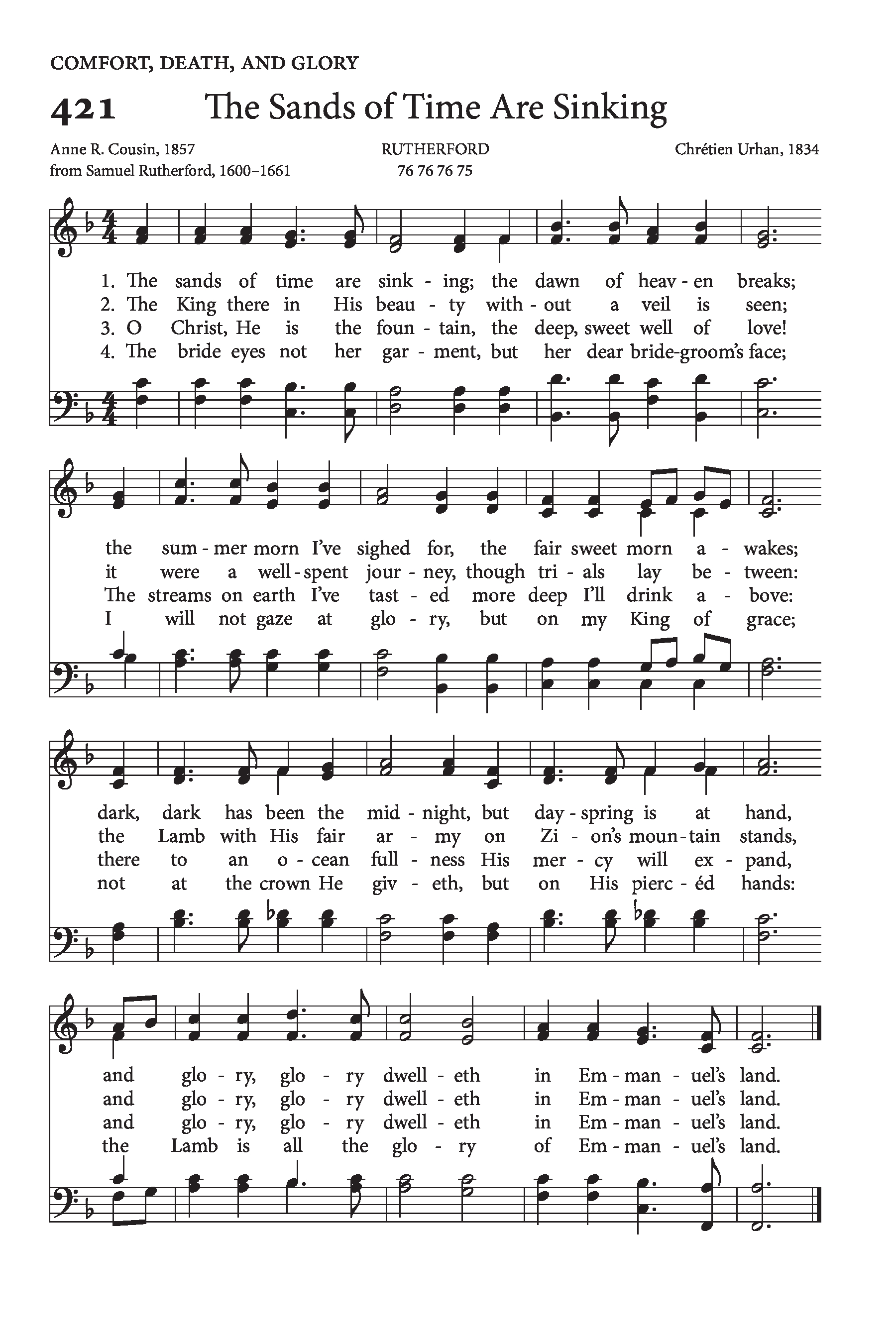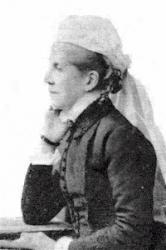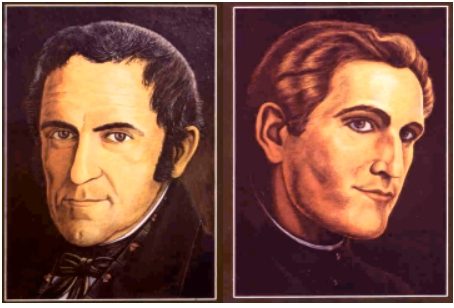The Sands of Time Are Sinking
By A. R. Cousin
Lyrics
the dawn of heaven breaks;
the summer morn I've sighed for,
the fair sweet morn awakes;
dark, dark has been the midnight,
but dayspring is at hand,
and glory, glory dwelleth
in Emmanuel's land.
without a veil is seen;
it were a well-spent journey,
though trials lay between:
the Lamb with His fair army
on Zion's mountain stands,
and glory, glory dwelleth
in Emmanuel's land.
the deep, sweet well of love!
The streams on earth I've tasted;
more deep I'll drink above:
there to an ocean fullness
His mercy doth expand,
and glory, glory dwelleth
in Emmanuel's land.
but her dear bridegroom's face;
I will not gaze at glory,
but on my King of grace;
not at the crown He giveth,
but on His piercéd hands;
the Lamb is all the glory
of Emmanuel's land.
Bible Reference
Psalm 17:15
About This Hymn
Author – Anne Ross Cousin, 1824–1906
Composer – Chretien D’Urhan, 1790–1845
Tune Name – “Rutherford”
Meter – 76.76.76.75
Scripture Reference – Psalm 17:15
“As for me, I will behold Thy face in righteousness: I shall be satisfied, when I awake, with Thy likeness.” – Psalm 17:15
Anne Ross Cousin, a gifted Scottish poet and hymn writer of the nineteenth century, is best remembered for her majestic and devotional hymn, “The Sands of Time Are Sinking.” First published in 1857 in the Christian Treasury, the original version of the hymn contained nineteen stanzas. However, only four are commonly found in modern hymnals. While Mrs. Cousin authored many hymns and poems of spiritual depth, this particular hymn remains her most enduring and beloved work. Its creation was inspired by the writings and life of Samuel Rutherford, a seventeenth-century Scottish Covenanter preacher and theologian whose passion for Christ and steadfastness under persecution left a lasting mark on Reformed spirituality.
Samuel Rutherford was born around 1600 in the village of Nisbet, Scotland. After earning a Master’s Degree from the University of Edinburgh in 1621, he became a professor of humanities there. Later, he was appointed pastor of the parish church in Anwoth, Galloway, where he ministered for nine years with great zeal and devotion. His preaching was so fervent that one contemporary remarked, “Many times I thought he would have flown out of the pulpit when he came to speak of Jesus Christ.” However, Rutherford's firm stance against the State Church’s interference in spiritual matters led to his banishment to Aberdeen, where he was prohibited from preaching. During this exile, he wrote over 220 letters to his congregation and other believers. These letters—often referred to as “prison epistles”—are considered some of the most moving and eloquent devotional writings in church history, filled with profound insights and deeply felt expressions of love for Christ.
Rutherford’s exile ended with the signing of the Solemn League and Covenant in 1638, which acknowledged the freedom of the Presbyterian Church. He returned to public ministry and continued as a major influence in the nonconformist movement. But with the death of Oliver Cromwell and the restoration of Charles II, persecution resumed. Rutherford was stripped of his titles and summoned to appear before Parliament on charges of high treason—an accusation that could have led to execution. Already on his deathbed, Rutherford calmly remarked, “I behoove to answer my first summons, and ere your day for me arrive, I will be where few kings and great folks come.” He died on March 30, 1661. His final words, “Glory, glory dwelleth in Immanuel’s Land,” were later adopted by Anne Cousin as the refrain of her hymn, and became a lasting expression of hope in the promise of heaven.
The hymn’s text, rich with biblical imagery and theological truth, meditates on the believer’s anticipation of heaven and the joy of being in the presence of Christ. It is not simply a funeral hymn, as it is sometimes used, but a triumphant declaration of spiritual victory and longing for the eternal homeland. The setting of the text to music by Chretien D’Urhan, a French violinist and composer of the early 1800s, further enhances its depth and solemnity. The tune, “Rutherford,” named after the minister who inspired the lyrics, features a stately tempo and a melodic rise in the final line that perfectly complements the hymn’s refrain: “And glory, glory dwelleth in Immanuel’s land.”
“The Sands of Time Are Sinking” invites the believer into a reflective and devotional experience. It is a hymn that must be read and pondered slowly in order to fully absorb its meaning. Each line carries weight, drawing attention to the surpassing beauty of Christ, the brevity of earthly suffering, and the glorious anticipation of eternal communion with God. Through this hymn, Anne Ross Cousin not only honored the memory of Samuel Rutherford but also gave the Church a timeless expression of joyful hope and faithful perseverance.


📬 Subscribe to Our Devotional Updates
Receive weekly hymns, devotionals, and website features directly in your inbox.
Hymn Information

- Category: Hymn
- Author/Writer: A. R. Cousin (1857)
- Added: July 11, 2025
- Last Updated: July 11, 2025
- Views: 809
MIDI File
Recent Blog Posts
-

-
 Is Faith Blind?
Is Faith Blind?
Dec 05, 2025 -
 What Is True Worship?
What Is True Worship?
Dec 05, 2025 -
 Can Christians Date Non-Believers?
Can Christians Date Non-Believers?
Dec 05, 2025 -
 How Do I Study the Bible Effectively?
How Do I Study the Bible Effectively?
Dec 05, 2025
Visit Us on Social Media
Latest from X (Twitter)
Tweets by HymnalLibraryLatest from Facebook
Latest on YouTube
Daily Bible Verse
Disclaimer
The hymns, sheet music, MIDI files, and related content on this website are provided for educational and research purposes only.
- Public Domain: Many of the hymns featured here are in the public domain and may be freely used.
- Copyrighted Works: Some hymns may still be under copyright protection. Where applicable, permission has either been requested from the copyright owner, or the content is shared under the principles of fair use for educational purposes.
⚠️ Important Notice: If you wish to reproduce, distribute, or use any copyrighted hymn beyond personal study or educational use, you must obtain permission directly from the copyright holder. This website does not grant any rights for commercial use yet.
If there is any other question please address it to us in our Contact Page, for further assistance. Thank you for using the site. May God Bless You.